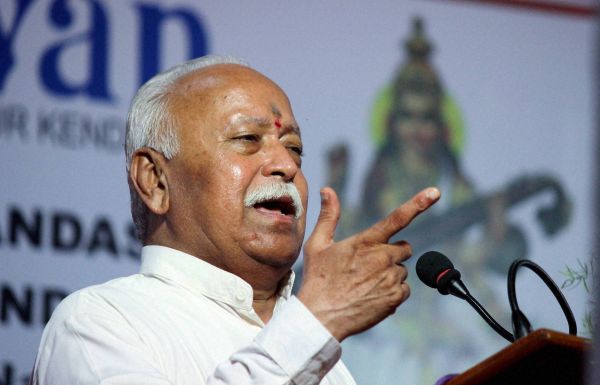
by admin | May 25, 2021 | Opinions

Rashtriya Swayamsevak Sangh (RSS) chief Mohan Bhagwat
By Amulya Ganguli,
Rashtriya Swayamsevak Sangh (RSS) chief Mohan Bhagwat’s advice to cow vigilantes not to bother over much about judicial strictures shows a measure of annoyance with the roadblocks which the Hindutva lobby is facing in a secular polity.
The dissatisfaction may have increased in the saffron camp in view of two more Supreme Court pronouncements relating to inter-faith marriages and the fate of the Rohingyas, the hapless refugees from Myanmar who have aroused the saffron brotherhood’s ire presumably because they are Muslims.
On inter-faith marriages, the court has wanted to know in the context of a Kerala High Court judgement whether the judiciary can annul a wedding between two adults belonging to two different religions.
It is a rhetorical question which strikes at the root of a Sangh Parivar agenda which seeks to prohibit by fair means and foul any love affair or marriage between a Hindu woman and Muslim man and, by implication, between Hindus and Christians as well or any other religious community.
The Parivar’s argument is that such nuptials are no more than a ploy to lure the woman into a familial arrangement to facilitate her conversion.
Hence, the phrase “love jehad”, depicting a hapless Hindu woman who is the victim of a predatory Muslim male.
The apex court’s intervention is in a case in Kerala where the High Court has nullified the marriage of a 24-year-old woman with a Muslim while the Supreme Court had earlier ordered a National Investigation Agency (NIA) probe in the matter although the NIA is supposed to look into only acts of terror.
Irrespective of the final outcome of the Supreme Court’s examination of the case, the arguments that have already been aired such as whether the two prominent Bharatiya Janata Party (BJP) politicians who have Hindu wives can be accused of “love jehad” are bound to be awkward for the Parivar.
But what must be no less disconcerting for the latter is that the undermining of some of the programmes, which the saffron camp has pursued diligently, can raise questions about other divisive initiatives like ghar wapsi or converting Muslims to Hinduism.
This is all the more so because the saffron objections to inter-faith marriages are not unlike the often violent disapproval of the antediluvian khap panchayats to connubial ties between grown-ups belonging to different castes and communities or for being members of the same gotra.
As is known, one of the main proponents of the “love jehad” campaign was Uttar Pradesh Chief Minister Yogi Adityanath before he took office.
Of late, his ardour to keep marriages within the confines of each community has been dampened by the Centre’s unease about a rise in communal temperature lest it should affect Narendra Modi’s development agenda.
Besides, the Chief Minister has come under growing criticism because of his focus on erasing Muslim names such as that of Mughalsarai railway junction and omitting to mention the Taj Mahal in a tourist brochure rather than on saving babies in hospitals or ensuring that the police show a modicum of respect for girl students in Banaras Hindu University.
Clearly, at a time when Yogi Adityanath is proving to be as ineffective a Chief Minister as Suresh Prabhu was a Railway Minister, judicial reprimands are the last thing which the BJP wants, whether in internal affairs or in matters which have an external dimension.
If the judicial diktats on checking the gau rakshaks (cow vigilantes) and on “love jehad” have a domestic angle, the pronouncements on the Rohingyas impinge on issues of national security and international law and obligations.
Among the latter is the principle of “non-refoulement” which rules against sending back refugees to places where they are not wanted.
There is little doubt that if the government resorts to a forcible eviction of the Rohingyas, it will face considerable international opprobrium.
Considering, however, that the RSS chief has lambasted the refugees as vehemently as the government and BJP spokesmen have done, it is clear that the Parivar’s political and “cultural” wings are on the same page.
The Supreme Court’s verdict on the petition filed before it by two Rohingya refugees will be known after some time. But what the Hindutva group is likely to find disturbing is how the checks and balances built into the constitutional system can stall its efforts to take the country in a certain direction.
The only saving grace is the independence of the judiciary, especially at the higher levels, although this institution, too, experienced a troubling period during the emergency of June 1975 to March 1977, when even the principle of habeas corpus, the cornerstone of individual freedom, was suspended.
Interestingly, Justice D.Y. Chandrachud, while upholding the right to privacy in August overturned the verdict on the habeas corpus case which was delivered four decades ago by, among others, his father, Justice Y.V. Chandrachud.
In the case on gau rakshaks, love jehad and Rohingyas, the differences between the judiciary and the saffron Parivar are obvious.
For the average person, however, the judiciary continues to stand as a guardian against authoritarian and intolerant tendencies in the absence of an effective opposition.
(Amulya Ganguli is a political analyst. The views expressed are personal. He can be reached at amulyaganguli@gmail.com)
—IANS
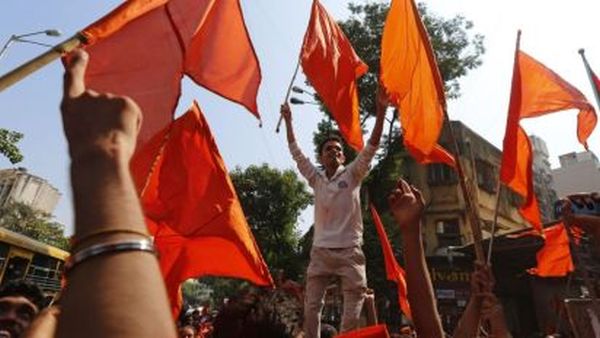
by admin | May 25, 2021 | Opinions
 By Ram Puniyani
By Ram Puniyani
Hindu Rashtra is the goal of Hindu nationalist politics, which is also called as Hindutva. In contrast to Hinduism, Hindutva is a politics of in the name of Hinduism with Brahmanism as the core of the same. In nutshell Hindutva is a politics based on Brahmanical values of caste and gender hierarchy. The concept of Hindutva-Hindu nation is a modern one, which developed as a parallel to Islamic nationalism, and in opposition to the concept of Indian Nationalism. Indian nationalism developed during colonial period as the inclusive nationalism of people of all religions, different castes, languages and regions based on values of Liberty, Equality and Fraternity.
Hindu nationalism developed from the section of Hindu landlords and kings with associated clergy on their side. As Indian nationalism was arguing for equalityof all the people, the previous ruling classes, felt threatened socially. Now their social privileges were under threat and so they gave a war cry of ‘Hinduism in danger’. This was a cry which was similar to the slogan of Muslim landlords and nawabs, who when their social status started declining; shouted ‘Islam in danger’.
Hindu Nationalism harped on the ancient glory of the times of Manusmriti and Vedas where the caste system was deeply entrenched in society. While national movement was articulating the need for land reforms, though they could never be properly implemented, Hindu nationalism harped on the earlier systems and was hiding its agenda of social inequality. It called for revival of a glorious period, despite the fact that the condition of women and dalits in those times were abysmal.
The needs of majority of Hindus were expressed in the national movement, which strove for democratic norms and its values got enshrined in Indian Constitution in the form of Liberty, Equality and Fraternity. The Hindu nationalists were opposed to these values and also the formation of Indian Constitution, which not only stands for liberation of all people from feudal bondages, it is a path of liberation of large sections of Hindus, barring of course the upper caste ones’, who stand to lose their primacy. Most of the Hindus participated in the freedom struggle while a handful of them wedded to ideology of Hindu Rashtra kept aloof from this massive process which was to pave the path of liberation of all the people including majority of Hindus.
Those standing for cause of majority of Hindus opposed the idea of Hindu Rashtra. Ambedkar points out, “It is a pity that Mr. Jinnah should have become a votary and champion of Muslim Nationalism at a time when the whole world is decrying against the evils of nationalism… But isn’t there enough that is common to both Hindus and Musalmans, which if developed, is capable of moulding them into one people?… If Hindu Raj does become a fact, it will, no doubt, be the greatest calamity for this country…’ Compare the Sangh Parivar’s view of nationalism with these two conceptions and draw your own conclusions. (https://www.kractivist.org/tag/history/)
Gandhi the greatest Hindu of his times pointed out, “In India, for whose fashioning I have worked all my life, every man enjoys equality of status, whatever his religion is. The state is bound to be wholly secular”, and, “religion is not the test of nationality but is a personal matter between man and God, and,” religion is a personal affair of each individual, it must not be mixed up with politics or national affairs” (Harijan August 31, 1947)
After Independence, the followers of Hindu nationalists were very small and they kept working for breaking the core pillar of Indian nationalism, Fraternity. They kept spreading hatred against religious minorities. This hatred became the foundation of communal violence in times to come. While majority Hindus were going along with the national policies for building modern India through modern education and modern industries, the Hindu nationalists were criticizing and opposing these policies all through. While the majority of Hindus are faced with the problems of bread butter shelter employment and dignity, Hindu nationalists have been raising the emotive issues to divide the society along religious lines. The result is that in the din of hysteria, in the name of Hinduism and Hindus; they have been sidetracking the real issues of Hindus and substituting them with identity issues.
When BJP led NDA came to power it opened the path of restoring blind faith by introducing courses like Paurohitya (priesthood) and Karmakand (ritualism). Hindus need to be liberated from the clutches of blind faith while these policies are intensifying the retrograde, obscurantist values and undermining the real needs of average Hindus as well.
Last three years (since 2014) Modi-BJP-RSS government has come to power; the identity issues have been hiked up. Attempts have been made to undermine and bypass the issues related to Rights for food, education and health. The attempt was made to grab farmer’s land in the name of land reforms; somehow they could not succeed in that. The attempt to bring in land reform legislation was against interests of Hindus so to say. The labor reforms brought by Hindu nationalists have ruined the lives of workers at large. De-monitisation was propagated as a blow to black money holders, but its real victims have been average Hindus, who have suffered in silence. A series of emotive issues are dominating the social scene, Ram Temple, Bharat mata ki jia, Vande matram, Cow protection, Love Jihad and Ghar vapasi among other. The vigilante culture is getting promoted due to Hindu nationalist agenda. The beneficiaries of these policies have been affluent corporate sector, section of upper and middle classes while average Hindus are suffering the pain and anguish.
The society is suffering as age old values of love and amity are being demolished; the issues of poverty, illiteracy, hunger and health are being relegated to the margins of policy making. All this is against the interests of Hindus at large. Average Hindus are a big victim of this agenda.
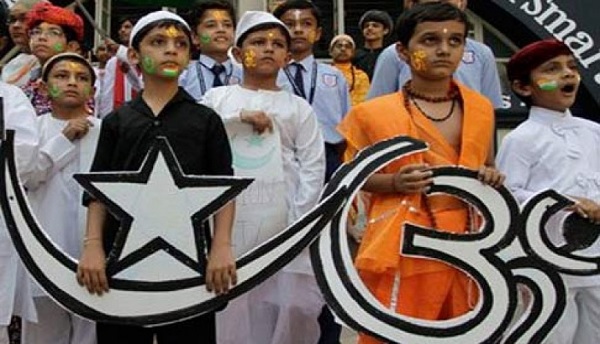
by admin | May 25, 2021 | Opinions
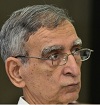
Ram Puniyani
By Ram Puniyani
Past is used by communal politics for their present political agenda. In India on one hand we have the use of medieval history where the Muslim Kings are presented as ‘aggressors due to whom Hindu society had to suffer’, on the other now we are witnessing the distortion of ancient history being marshaled to undermine Buddhism vis a vis Brahmanism.
The figure chosen to make this point by communal forces is that of Emperor Ashoka. Incidentally Noble Laureate Amrtya Sen regards Ashoka and Akbar as the two greatest Emperors to have ruled India. A publication from RSS progeny, Rajasthan Vanvasi Kalyan Parishad claims that it was due to Ashoka’s conversion to Buddhism and his promotion of ahimsa that India’s borders opened up to foreign invaders. It also goes on to say those followers of Buddhism under Ashoka played a seditious role, they assisted Greek invaders with the goal that they would destroy “Vedic religion” and restore Buddhism. Here, what is being referred to as Vedic religion is Brahmanism as such.
Interestingly the article regards Ashoka to be a great ruler till he embraced Buddhism, while most of the thinkers show that his humane policies, making him a great emperor, were brought in after he embraced Buddhism. There are many components of this formulation which are concocted as per the political requirement of Brahmanical Hinduism. One of these concoctions is the very notion of India being the state from times immemorial. One understands that India as a nation state emerged during freedom struggle. The earlier formations were kingdoms, Empires. The boundaries of these kingdoms were not fixed and depending on the bravery and other associated factors kings were expanding their area of rule or had to retreat into smaller areas or even getting decimated at times. Even before Ashoka came to power Alexander had attacked India. Such forays of kings into other territories are not unknown. Mauryan Empire was a major Empire the sub continent has seen.
So many dynasties have ruled large parts of the subcontinent, no single ruler has ruled whole of what is India today. So why is Ashoka being targeted today? Ashoka was successor to Bindusar, from Maurya lineage. Chandragupta Maurya had built the Empire and Ashok’s annexed Kalinga (modern Orissa) into his kingdom. This battle was very bloody and as is famously known the bloodshed shook Ashoka and he decided to embrace Buddhism. From this point on the transformation of an aggressive insensitive king to a very humane person began with the embracing of Buddhism. He undertook the measures for welfare of the people, opposed the Brahmanical rituals and opened the gates of his palace for listening to woes the people of his empire. Inspired by the teachings of Buddhism he took steps towards building a compassionate state, the guardian state.
His ideas and polices are deciphered from the number of edicts carved on pillars and stones which are vast in number. What emerge from these edicts are very compassionate and impressive norms being propagated as back as in the period of third Century BC. What is remarkable is that though he embraced Buddhism he accepted the diversity as the norm of society. One of his edicts says that a ruler must accept the diversity of his subjects’ belief. He did transform Buddhism in to a World religion. The spread of his ideas was not through force but through moral appeal and persuasion. His message was to reduce suffering and to pursue peace, openness and tolerance. This is why he is regarded as Great contrary to the said articles’ claim that he was great till he embraced Buddhism.
Ashoka’s was the largest Empire in the history of the sub continent. His Dhamma was a moral code for the ruler as well as for the subjects who were exhorted to follow the moral path. His Rock Edict XII is something which we need to remember in current times as well as it has great relevance even today. It is a call for religious tolerance and civility in public life or as he puts it, ‘restraint in speech’, “not praising one’s own religion or condemning the religion of the others without good cause…Contact between religions is good.” (Sunil Khilanani, Incarnations, ‘India in 50 Lives’ page 52). ‘He did not foist his faith, Buddhism on his subjects…He is important in history for his policy of peace, non aggression and cultural conquest’. (R.S. Sharma, Ancient India, NCERT, 1995, 104) Ashoka inspired the leaders of freedom movement for his principles of justice and non-violence. He did represent the agenda which symbolized cultural and religious pluralism which were central to the ideology of Gandhi and Nehru in particular. His symbols of four lions adorn Indian currency and the wheel has become part of Indian flag.
The problem with Ashoka’s rule was not the military one. His Empire continued till 50 more years. In 205 BC Greek Emperor Antiocus attacked from North West and established his rule in some part (North-West: Punjab, Afghanistan). The bigger problem was from within the empire. This is related to Brahminical counter reaction to the spread of Buddhism. Ashoka had put a ban on the slaughter for rituals. This led to reduction in the income of Brahmans. The spread of Buddhism led to the erosion of Varna-caste system. What the communal forces are calling as Vedic religion is as such the dominant stream which was prevalent then, Brahmanism.
These factors led to the counter revolution. Pushyamitra Shung, a Brahman, the Chief Commander of Brihadrath, who was Ashok’s grandson, led the counter revolution. He killed the Emperor and founded the Shunga dynasty in Sindh part of Ashoka’s empire. The counter revolution launched in the society led to the disappearance of Buddhism from this land. Ambedkar writes, “Emperor Ashoka proclaimed complete ban on killing animals. So nobody engaged Brahmans to perform rites and rituals. The Brahman priests were rendered jobless. They also lost their former importance and glory. So the Brahmans revolted against the Maurayan Emperor Brihadrath under the leadership of Pushyamitra Shung, a samvedi Brahmin and the army Chief of Brihadrath.” (Writings and Speeches, Vol 3 P 167) Eighth Century onwards Shankara led the ideological battle against the philosophy of Buddhism. Buddhism urged the people to focus on the life in this World. The Shankara’s philosophy called this World as illusion and restored Brahmanism here in full glory. Due to ideological and social counter revolution Buddhism disappeared from this land around 1200 AD.
So why is Ashoka’s reign coming under criticism now? Ashoka embraced Buddhism and this was a setback to the Brahmanical system. Brahmanism is the dominant part of Hindu religion as understood today. Ashoka talked of non-violence and promoted pluralism. All these stand totally against the Hindu nationalist agenda of sectarian nationalism where violence is part of the politics. This wants to promote neo Brahmanical values. So on one hand there is the attempt to co-opt Dalits and other hand the aim is to keep the ideological message of social hierarchy loud and clear and so Buddhism is attacked. The symbols of casteless ideology of Buddhism and accompanying respect for pluralism and peace are being attacked as a part of Hindu nationalist agenda, the garb in which it is presented is ‘weakening of India’ due to non-violence. As such Maurayan was an Empire, not a nation state, empires rise and fall due to social political factors of the time. Despite adopting non-violence the Empire continued well till 50 more years. The weakness starts coming in due to Brahmanical counter-revolution. The forays of communalists in the ancient Indian history are an attempt more to denigrate the Buddhist values under the garb of attacking Ashoka.
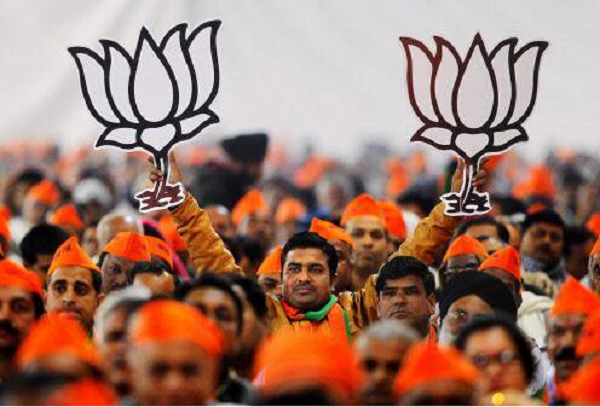
by admin | May 25, 2021 | News, Politics
 New Delhi, (IANS) A low-profile man but always sporting an infectious smile, Sarbanand Sonowal is now all set to be Assam’s second tribal chief minister after legendary Jogen Hazarika in the 1970s.
New Delhi, (IANS) A low-profile man but always sporting an infectious smile, Sarbanand Sonowal is now all set to be Assam’s second tribal chief minister after legendary Jogen Hazarika in the 1970s.
The 53-year-old former president of influential All-Assam Students Union, who hails from the Kachari tribe, brings in a unique synthesis of tribal leadership and Hindutva politics in governance-starved Assam.
Sonowal’s being a tribal suited both the Rashtriya Swayamsevak Sangh (RSS) and BJP in their quest for power beyond river Brahmaputra in the northeast. With his staunch opposition to the illegal migrants from Bangaldesh, Sonowal gave legitimacy to the Hindutva politics of a ‘north Indian party’ among the tribals in the northeast.
“BJP was always an accepted political force for upper caste Hindu Assamese, but Sonowal and few others like tea tribe leader Kamakhya Tassa gave BJP new footholds. The election results in Assam today exemplify that paradigm shift and hopefully its a new beginning under Sonowal,” says Guwahati-based political analyst Ratnadeep Gupta.
It goes to Sonowal’s credit that he could deliver Assam to Prime Minister Narendra Modi and party chief Amit Shah in an election where the so-called ‘Modi wave’ of 2014 was either on the wane or simply non-existent.
Trends available so far suggests Sonowal’s presence actually helped BJP which portrayed itself as a pro-tribal outfit for the first time. This brought in huge dividends. Besides Sonowal’s own Kachari tribe, other communities like Moran, Muttock, Tai Ahom, Koch Rajbongshi, Sootea and the Tea tribes too flocked to the BJP.
These tribals from the plain have a significant presence in upper Assam districts of Jorhat, Golaghat, Sivsagar, Dibrugarh, Tinsukia, Lakhimpur and Dhemaji.
The fact that BJP has overthrown a government which ruled for 15 years is significant because in 2011 the saffron party was an ‘also-ran’ with only six seats in the assembly.
Delighted by the success, Sonowal attributed it to the “family-like team work” of BJP leaders, including Prime Minister Modi, BJP chief Shah and a new entrant Himanta Biswa Sarma.
The alliance BJP worked out with tribal group Bodo People’s Front (BPF) also helped the National Democratic Alliance (NDA).
Observers feel the basic credit should go to the strategy team which advised BJP leadership to project Sonowal as the chief ministerial candidate and work out an alliance with the Bodo People’s Front (BPF).
In the last assembly election, the BPF was in alliance with the Congress. Till end of November 2015, BJP was not sure about the tie-up with the BPF. But Ram Lal, BJP’s organisational general secretary, had said that only such a tie-up will put the BJP on track in Assam. His calculation seemed to have worked pretty well.
This alliance did well across the Bodoland Territorial Area Districts — BTAD comprising Kokrajhar, Kajolgaon, Udalguri and Baksa districts.
The BJP calculation that Bodos can influence results in as many as 25-30 assembly seats in the state also brought in dividends.
Significantly, at a later stage the Bodos had decided to extend support to the Gorkhas, Kalitas, Koch-Rajbongshis and Adivasis for ST status.
Congress tried an alliance with smaller Bodo group United People’s Party (UPP) but that did not help.





